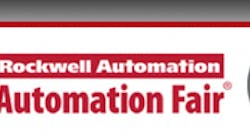“The war for talent is going to get even more challenging.” Rockwell Automation’s Susan Schmitt explained how the company’s search for talent has driven inclusion and diversity initiatives.
The journey of Rockwell Automation to build an inclusive culture and more diverse organization began long ago. Still a work in progress, the automation giant’s transformation earned it the 2017 Catalyst Award, which recognizes innovative organizational initiatives that address the recruitment, development and advancement of women.
At Rockwell Automation, the push for inclusion and diversity began in earnest some 10 years ago to address to a growing shortage of workers with necessary skills. “This is a talent agenda,” said Susan Schmitt, senior vice president of human resources, Rockwell Automation, in her address to the Automation Fair Industry Forum focused on the topic of Inclusion & Diversity in Manufacturing this week in Houston. “Every company cares about talent, and the opportunity we have is to create a company that attracts and keeps talent.”
Over the next decade there will be a billion new people in the middle class, adding $8 trillion in consumer spending to the global economy, said Schmitt. “Meanwhile, the war for talent will get even more challenging. Twenty-one percent or 2.5 million manufacturing workers will retire in the next eight years in the United States. 75% of employers say new skills will be required over the next two years. How do we find great talent and bring it into the organization? We must be thinking about how we recruit and retain talent. The challenge is not only how you hire great talent, but how you keep it.”
Diversity by the numbers
Women make up 47% of the population, but they comprise only 29% of the manufacturing workforce, added Schmitt. To make matters worse, a survey revealed that 33% of females trained as engineers left those roles because of industry’s exclusive culture. And only 23% of senior roles are held by women. The same goes for underrepresented minority groups.
“For organizations that have more women and minorities in leadership roles, those companies perform 35% better from a financial standpoint,” said Schmitt.
With such sunny financial forecasts, what organization wouldn’t want to break down the walls of boardrooms traditionally dominated by white men? Schmitt shared five compelling reasons to choose inclusion:
- Talent—employee attraction and retention
- Greater innovation and better decision-making
- Relevance—customers are becoming more diverse
- Greater productivity—if people don’t feel they have equal opportunity, they’re not as productive
- Financial evidence—diverse teams outperform less diverse teams
Let’s get to work
“A lot of technology companies are investing a lot of money to create more diversity,” said Schmitt. “But are they spending their money on actions that will make a difference?” Some approaches work, and some simply exacerbate the problem. “Most companies with good intentions are making things worse,” explained Schmitt. “Looking to the minority groups for the answers doesn’t work. It makes them feel frustrated.”
What doesn’t work:
- Leaving white men out
- Lack of business ownership
- Viewing diversity as a problem
- Traditional programs; and
- Assimilation culture—trying to assimilate against the dominant dynamic is a waste of talent.
What does work:
- Inclusion as a business imperative—it’s a talent agenda
- Understanding the dynamics of culture—dominant/subordinated/systemic privilege
- Executives who personalize the work
- Critical dialogue and commitment to action
Rockwell Automation exit interviews of individuals leaving the organization revealed that the company had to do better, Schmitt said. “60% said it could have been prevented,” Schmitt said. “Of underrepresented minorities, 48% said it could have been prevented.” That meant opportunity.
“We brought in an outside company that did some amazing work,” explained Schmitt. “We wanted to raise the level of understanding. When we talk about diversity and inclusion, we talk about the different groups, but we never talk about white men. They think of themselves as individuals, not members of a group. But white men are part of a group. It’s called the dominant group. When you understand the dynamic between the dominant group and non-dominant groups, you understand the dominant group has access to privilege and power.”
Roll out the program
“Over a four-year period, we talked to about 1,200 employees and got an idea of what the barriers were,” explained Michele Matthai, director, culture of inclusion, Rockwell Automation. “Then they created inclusion change teams, and those groups were chartered with fixing the barriers to inclusion.”
Many of the sales organization’s networking events, for example, were similar, being centered around golf events or in sports bars. With the new awareness, those events started to broaden to things such as charity events or painting activities. “These events started broadening our perspectives on things,” said Matthai. “The more inclusive we are, the more we can broaden our perspectives and get to better solutions.”
The inclusion change teams started addressing barriers. “But it’s not a one-time thing,” added Matthai. “It’s an ongoing willingness to ask questions, be curious and connect with each other. Maybe it’s starting a staff meeting with an inclusion moment. Over time, we realized there were things we could do on a much broader basis. We’re training managers on a daily basis, whether it’s hiring, coaching or developing. We customize that training to make sure it’s relevant to all of our leaders all over the world. We’ve seen a major transformation over the past 10 years, and now we’re looking for ways to make inclusion part of our DNA.”




